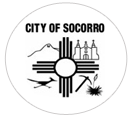Articles Written by Socorro’s Historian Paul Harden
Free State of Socorro
Free State of Socorro Part 2
Original 1882 Socorro Land Owners
Socorro Land Grant
Governor Manuel Armijo – The Socorro Connection
Original 1953 Proclamation
FREE STATE OF SOCORRO
By El Defensor Chieftain Reports – October 17, 2013
It all started in February 1953, when Socorro resident Elmer Brasher was arrested and found guilty of driving while intoxicated.
Brasher hired well-known local attorney Claron Waggoner to appeal the decision. Waggoner argued that while DWI was against state law, he could find no law against it in Socorro’s ordinances. District Judge Charles Fowler, intrigued by this unique argument, suspended court to conduct his own investigation into the matter. Fowler found that many of the city’s statutes had not been properly recorded.
Waggoner and a colleague continued to investigate Socorro’s legal history. What they found was truly astounding. When the Spanish empire fell in 1821, all Spanish lands were converted to Mexican land grants. With statehood, the constitution provided that all Mexican land grants become part of the state of New Mexico — and, of course, the United States.
Socorro was an exception. It seems the Spanish Provincia de Socorro land grant was never turned over to Mexican authorities and was omitted from the 1848 annexation to the territory of New Mexico. Therefore, the two attorneys concluded Socorro County is not and never was a legal part of the state of New Mexico.
The next issue of the Socorro Chieftain announced these findings under the headline: “Socorro May Establish New Free State.” Chieftain editor Thomas Dabney speculated Socorroans were due a full refund of federal and state taxes since 1912 statehood.
The official “Proclamation for the Free Republic of Socorro,” in English and Spanish, was published on April 9 in both the Socorro Chieftain and the Spanish language El Defensor.
All Socorro wanted to do was get the attention of lawmakers in Santa Fe, whom everyone thought were neglecting this rural county’s needs.
Socorro gave a convincing impression of sovereignty by erecting a Port of Entry on U.S. 85 (now I-25) and charging 25 cents to pass through the county. For $1, you could become a citizen and travel the county’s highways for free. The phenomenon got the attention of the rest of the country, climaxed by a three-page feature article in Life magazine in June. Almost overnight, Socorro went from an obscure desert town to a tourist destination. Thousands of travelers bypassed Santa Fe for Socorro.
This turn of affairs also got Santa Fe’s attention: State money financed road improvements, a county public health clinic and a new hospital.
The heyday of the Free State of Socorro lasted into 1955, but revivals keep the movement alive.
Free State of Socorro research contributed by Paul Harden.
Contact:

